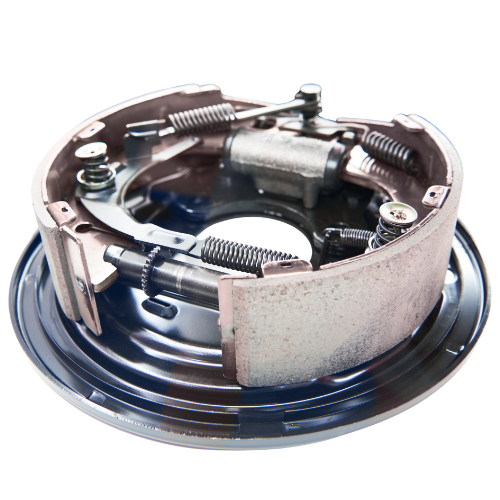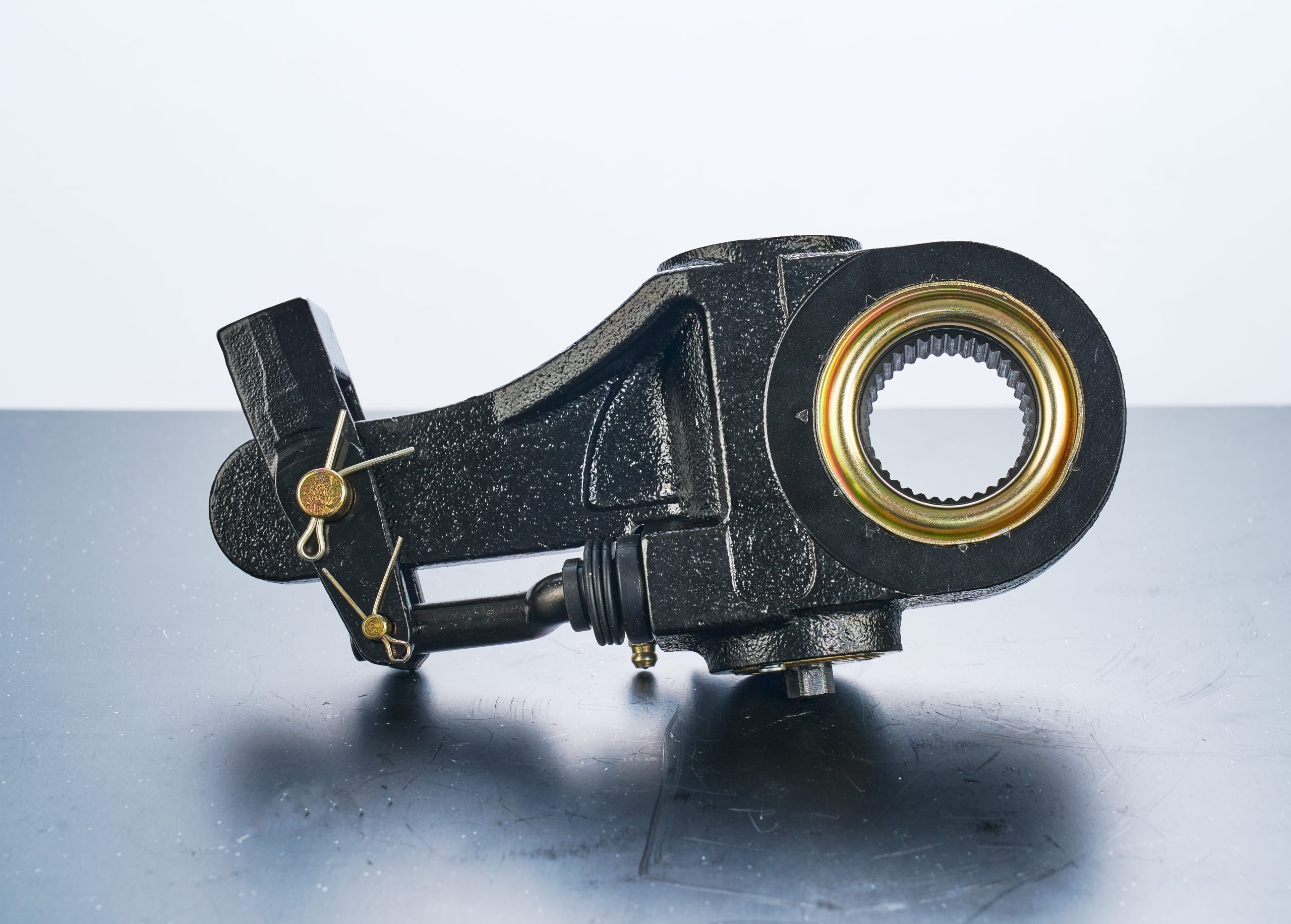Explore the four key components that make up a truck’s brake system—engineered to ensure safe, reliable, and powerful stopping performance on every road.

While components like brake chambers, slack adjusters, and brake calipers may sound complex, the basics of air brake systems can be explained in a simple, easy-to-follow way.
This guide provides a clear, practical overview of how air brakes function, what key parts are involved, and why regular attention to brake components like brake shoes, slack adjusters, and brake chamber replacement can make all the difference in staying safe on the road.
Air brakes are a type of braking system commonly used in heavy vehicles like trucks, trailers, and buses. Instead of using hydraulic fluid like in passenger cars, air brakes use compressed air to apply braking force. This method is reliable, powerful, and particularly effective for vehicles that carry significant weight or travel long distances.
Air brakes are designed not just for performance, but also for safety. In many systems, if air pressure drops too low, the brakes automatically engage — providing a built-in fail-safe to prevent runaway vehicles.
At a high level, air brakes work by building air pressure in tanks, which is then used to operate the brakes when the driver presses the pedal. When the brake pedal is released, the air pressure is exhausted and the brakes disengage. It’s a cycle of building and releasing air, with every press of the brake pedal controlling that flow.
While the system includes multiple components, each plays a specific role in managing and delivering air pressure efficiently and safely.

Here’s a beginner-friendly breakdown of the main parts of an air brake system and what they do:
A complete air brake system is typically made up of three subsystems:
• Service Brakes: Activated during normal driving when the pedal is pressed.
• Emergency Brakes: Designed to engage automatically if air pressure drops too low.
• Parking Brakes: Often spring-activated, they keep the vehicle stationary when parked.
Knowing how each type functions helps drivers better understand warning signs and how to respond if something doesn’t feel right.
You don’t have to be a mechanic to benefit from knowing the basics of your truck’s air brake system. Here’s why it’s worth understanding:
• You’ll recognise early signs of wear or failure (e.g. air leaks, poor brake response)
• You can communicate better with your mechanic or truck brake calipers manufacturer
• You’ll know what questions to ask when sourcing parts or requesting maintenance
No matter the make or model of your truck, the fundamental principles behind air brake systems are generally consistent across the board.
Even well-maintained systems can develop issues. Some of the more common problems include:
• Air leaks in the brake lines or chambers
• Sticking slack adjusters that don’t return properly
• Brake chamber cracks or diaphragm failures
• Uneven wear on brake shoes or calipers
• Weak or inconsistent braking
Recognising these early can prevent costly repairs or safety hazards.
If your truck feels sluggish when braking, pulls to one side, or makes unusual noises under braking pressure, it may be time to inspect or replace key components. While you may not handle the replacement yourself, understanding when a brake chamber replacement is needed — or when semi truck slack adjuster wear is causing uneven braking — gives you an edge in maintenance planning.
Air brakes are at the heart of every heavy vehicle’s safety system. As a truck owner, knowing how they work — and understanding the basic function of parts like brake chambers, slack adjusters, and brake shoes — gives you the confidence to spot issues early and have more informed conversations about service and repair.
You don’t need to master the mechanics, but having a practical understanding can help prevent breakdowns, extend component life, and improve overall vehicle safety.
What makes air brakes different from regular brakes?
Air brakes use compressed air to activate the brakes, unlike hydraulic systems that rely on fluid. They’re better suited for heavy loads due to their power and built-in safety mechanisms.
How often should I inspect air brake components?
Air brakes should be inspected regularly as part of your maintenance schedule, especially before long trips or heavy hauls.
Do all trucks use air brakes?
Most heavy-duty trucks, trailers, and buses use air brakes. Light commercial vehicles may still use hydraulic systems.
Are brake chambers and slack adjusters interchangeable between brands?
Not always. It’s important to match specifications and compatibility, especially with components like semi truck slack adjusters or heavy duty brake calipers.
Can I check air brake performance myself?
You can do a basic walkaround and listen for leaks or air loss, but detailed inspections should be done by qualified technicians.